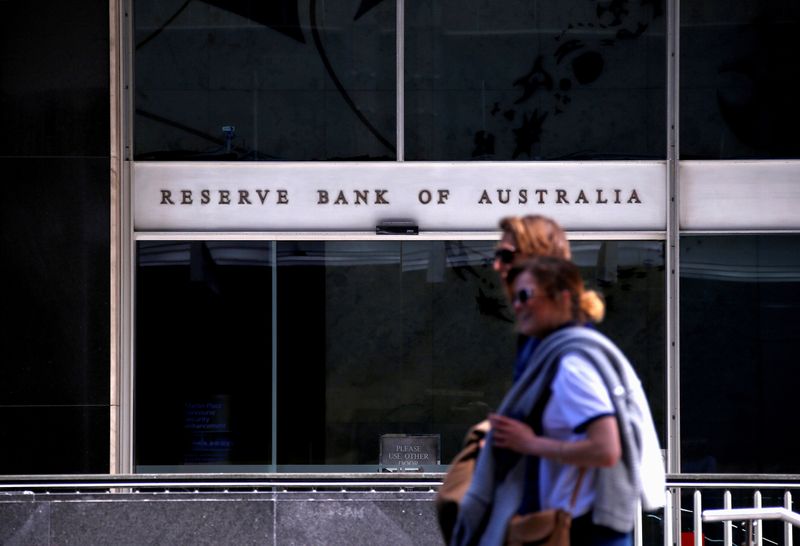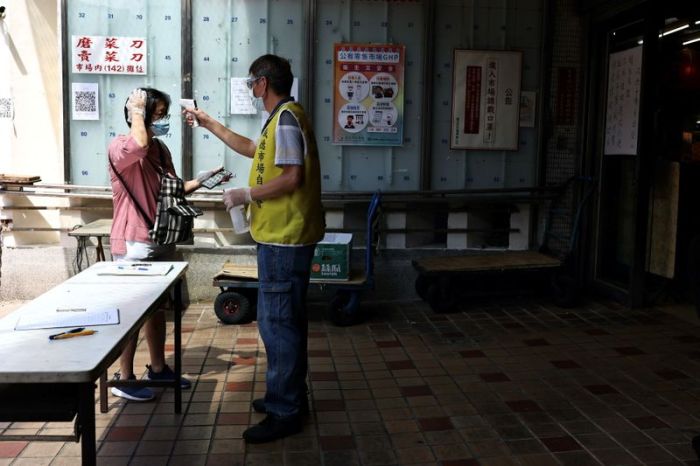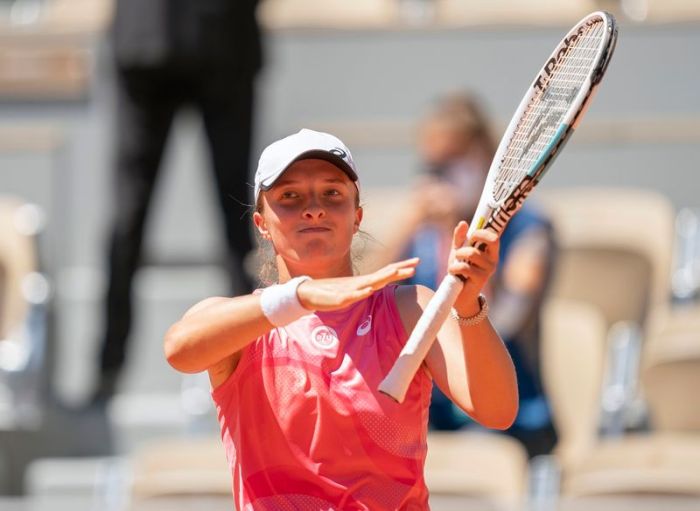SYDNEY (Reuters) -Australia’s central bank left its cash rate at record lows on Tuesday and reiterated its lower-for-longer policy stance even as data showed the country’s economic output was above its pre-pandemic level and house prices were shooting through the roof.
The Reserve Bank of Australia (RBA) left its policy settings at 0.1% for a sixth straight meeting, awaiting inflation and wage pressures, in a decision that was widely expected by economists in a Reuters poll. [AU/INT]
The local dollar briefly stumbled to $0.7740 from a one-week high of $0.7769 reached earlier in the day as the RBA wrongfooted some market participants who were expecting a hawkish tilt in the central bank’s statement, in line with its New Zealand counterpart.
The Reserve Bank of New Zealand (RBNZ) last week hinted at the end to a pandemic-era, ultra-loose monetary policy, leading some to believe the RBA would venture on that path too.
Governor Philip Lowe instead justified the need for near-zero rates despite a strong economic recovery by saying “inflation and wage pressures are subdued” and a pick-up in prices is expected to be only “gradual and modest.”
“An important ongoing source of uncertainty is the possibility of significant outbreaks of the virus,” Lowe added.
Australia’s second-most populous state of Victoria plunged into a lockdown last week after the state reported its first locally transmitted coronavirus cases in nearly three months.
The RBA also repeated it will not raise interest rates until inflation was “sustainably” within its 2-3% target band. Under its central scenario, underlying inflation is seen below the mid-point of that range through mid-2023.
The comments come even as recent economic data has pointed to a surge in activity.
A slew of strong figures earlier in the day prompted analysts to sharply upgrade their forecasts for Australia’s first-quarter gross domestic product (GDP) growth to a rapid 1.6% from 1% before the data was released.
THIRD QE?
Separate figures showed Australia’s home value index jumped 10.6% in May from a year ago to clock its strongest annual growth rate in almost 11 years.
First-quarter GDP data is due at 0030 GMT on Wednesday.
“Given the speed of the recovery we think there is a good chance that the RBA’s objectives for a rate hike will be achieved before the ‘2024 at the earliest’ that it refers to and so are allowing for a first rate hike in late 2023,” said AMP chief economist Shane Oliver.
“But that’s still a long way off. Key to watch will be unemployment heading to 4% and wages growth heading above 3%.”
The unemployment rate is at 5.5% currently while wage growth is crawling at an anaemic 1.5% pace.
Economists said the July board meeting, where the RBA would review its unconventional policy settings, will be crucial.
They expect the RBA will decide not to extend its three-year target of 0.1% beyond the April 2024 government bond.
A third round of quantitative easing (QE) is widely expected, however, albeit in a smaller size than the A$100 billion seen in each of the first two rounds, which would represent a tapering of its ultra-loose monetary policy.
Expectations the RBA may taper its quantitative easing (QE) programme gathered steam after the Bank removed a sentence from its statement that said the Board was ‘prepared to undertake further bond purchases.’
ANZ economists said the removal poses “some risk to our expectation that QE-3 will be of the same size as the first two QE programmes.”
The RBA first announced a A$100 billion quantitative easing programme in late-2020 and this year announced an extension by another A$100 billion.
A third extension is seen likely though analysts are divided over whether a tapering could occur or not.
“We can see merit in some modest tapering given the strength and broadening of the recovery,” RBC economist Su-Lin Ong said, expecting a third QE of A$75-A$100 billion.
(Reporting by Swati Pandey; Editing by Ana Nicolaci da Costa)

























